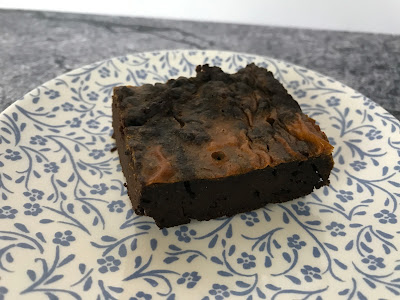I decided to make
this raspberry-hibiscus poke cake from Bon Appétit because we had a lot of hibiscus tea left over from one of the Engineer’s recipes, plus egg whites in the freezer. We really liked this cake! To be fair, the Fox didn’t eat it much, but the Little Prince said it was one of his favorite cakes ever.
I have to say that this cake definitely wasn’t going to come out of the pan in one piece, so I left it in the pan. Individual pieces could be removed without too much trouble, so it worked out fine, but if unmolding it is important to you, line the pan with parchment paper first. Also, the topping never whipped up to stiff peaks like it was supposed to, but that could be my fault because I used a vegan substitute for the whipping cream and it may not have reacted properly to the recipe. That’s on me. However, since my cake was still in the pan, the frosting just levelled itself evenly over the surface and, once refrigerated, gelled with a nice smooth top. Perhaps this would not have happened had my cake not still been in the pan, so I guess two wrongs make a right?
For the cake
1 cup (2 sticks) lactose-free butter, at room temperature, cut into pieces
3 cups (345 g) cake flour
1 ½ tsp. baking powder
1 tsp. baking soda
½ tsp. Diamond Crystal or ¼ tsp. Morton kosher salt
2 cups (400 g) sugar
6 large egg whites
2 tsp. finely grated lemon zest
1 tsp. vanilla extract
½ tsp. almond extract
1 ½ cups buttermilk substitute (1 ½ Tbsp. lemon juice + top up with lactose-free milk)
For the filling
2 12-oz. bags of frozen raspberries, thawed
1 Tbsp. unflavored powdered gelatin
½ cup (100 g) sugar
¼ cup dried hibiscus flowers
For the topping
1 10-oz. bag of mini marshmallows
1 tsp. vanilla extract
1 ½ cups lactose-free whipping cream or substitute (see note above), divided
For the cake
Place a rack in middle of oven; preheat to 325 °F. Grease a 13”x9" baking dish (as per my note above, I would also line it with parchment paper and leave some overhang on the long sides of the pan).
Whisk flour, baking powder, baking soda, and salt in a medium bowl to combine.
Using an electric mixer on medium-high speed, beat butter and sugar in a large bowl until light and fluffy, about 4 minutes. Add egg whites, one at a time, beating to blend after each addition and scraping down sides and bottom of bowl occasionally, until very light and airy, about 3 minutes. Beat in lemon zest, vanilla extract, and almond extract.
Reduce mixer speed to low, add dry ingredients in 3 additions, alternating with buttermilk in 2 additions, starting and ending with dry ingredients. Increase speed to medium-high; beat 2 minutes. Scrape batter into prepared pan and smooth out evenly to edges.
Bake cake until golden brown and a tester inserted into center comes out clean, 45–55 minutes. Transfer pan to a wire rack and let cake cool in pan 15 minutes.
For the filling
While the cake is cooling, place raspberries in a fine-mesh sieve set over a medium bowl. Using a wooden spoon, press down on raspberries until you have 1 cup juice; discard solids (or save for another use). Sprinkle gelatin over; let sit 10 minutes.
Meanwhile, stir sugar, hibiscus flowers, and 1½ cups boiling water in a small bowl to combine and let sit 10 minutes. Strain through a fine-mesh sieve into bowl with raspberry mixture; discard solids. Whisk until filling is smooth.
Using a chopstick, poke holes down into the cake at 1" intervals. Slowly pour filling over cake, letting it seep into holes. Chill cake while you make the topping to let the filling set up a bit.
For the topping
Heat marshmallows, vanilla extract, and ½ cup cream in a medium saucepan over medium, stirring constantly, until marshmallows are melted, about 3 minutes; chill remaining 1 cup cream until ready to use. Let marshmallow cream cool, about 30 minutes.
Using an electric mixer on medium-high speed, beat chilled 1 cup cream in a large bowl until soft peaks form. Scrape in marshmallow cream and beat until almost stiff (see note above).
Turn cake out onto a platter. Turn right side up and spoon marshmallow whipped cream on top. Spread to edges, making dips and swirls.
Note that I froze several individual pieces, and they were great when thawed!














